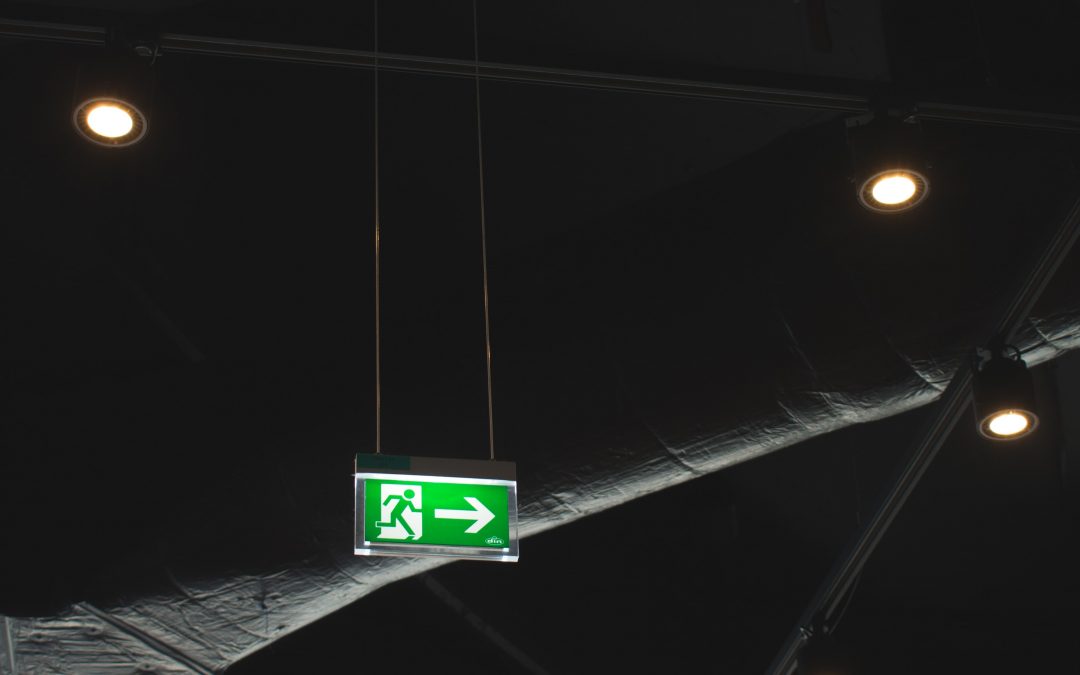Emergency lighting refers to a light that automatically turns on when a building experiences a power outage. This is an important feature in a wide variety of environments. It is the law in the UK to have emergency lighting fitted in occupied buildings and it’s vital to test the lighting regularly for safety purposes. This law comes under Fire Precautions Regulations 1997.
We are ETR Electrical Ltd. We understand electrics back to front, inside out, so we’ve written an overview of what emergency lighting is, how it works and why you need it. Picture this. A power cut or fire has caused all the lights in your apartment block, university workplace to shut off. Most people’s initial reaction could be pure panic. It’s easy to stumble, fall and possibly injure yourself in the dark.
Where you’ll find them
Have you ever noticed that every escape route is illuminated by emergency lighting? Usually, you can find it above the door. What about stairwells? These can be dangerous in the event of an emergency so every stairwell is lit by at least two emergency lights.
During the construction stage, it is very common for emergency lighting to be installed in new buildings. The building will be designed in accordance with current Building Regulations and any local authority requirements.
Types of Lighting
There are lots of different types of emergency lights. However, usually you have a choice of two to keep you safe and well lit.
Maintained lights are controlled in the same way as all other lights in the building. These lights will still work if the power fails, but at a lower lux level.
Non-maintained lights will be switched off usually, but they will remain fully charged at all times. The battery supply will turn on automatically if a power cut were to happen. If you’re unsure about how to install or maintain emergency lights, that’s what we’re here for. Email us at sales@etrelectrical.co.uk to chat about it.
Qualified Engineer
Bear in mind, it is absolutely vital that emergency lighting is tested by a qualified engineer. It requires the simulation of a mains power failure on the regular lighting circuit. The results will be logged into a fire safety logbook.
A little green light above a door can seem so unimportant. But in the event of an emergency, they can possibly mean life or death. That’s why it’s important for us as electrical testing and repair experts, to think of every eventuality. We need to cover all bases and understand what emergency lighting is and how it works.


Recent Comments